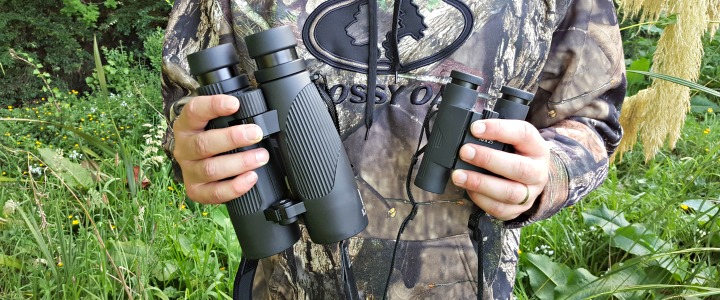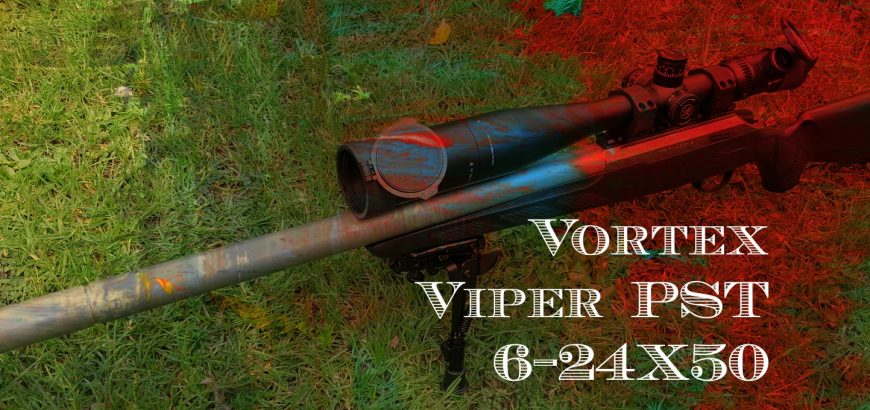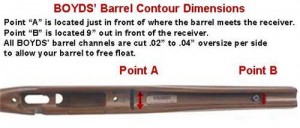I can feel the vitriol on your side of the screen already. Hang on a sec – read the article. And by the time you get to the end, if you feel you agree, make sure to share this message on social media.
-
We need to leave all of the free-range, organic meat in the forests and mountains
We can’t all be vegans. If we were, who would the vegans judge? Joking aside, there will always be meat-eaters among us, and as much as we praise the benefits of free-range, organic meat, we apparently don’t like it when people go and get it for themselves.
-
Our families should be further disconnected from their food supply
We already use words like veal, venison, beef, lamb, mutton, pork and more to distance ourselves from the fact that we eat pigs, cows, sheep, deer, etc. Chicken gets a pass.
We also allow big corporations to taint our protein sources with genetic manipulation, modified starches, cereal, preservatives and Bic Mac sauce. If we can keep our families completed disconnected from the supply food they eat, they can continue to have little respect for the environment, and feed into the profits of factory farms and global chain “restaurants”.
-
Our biodiversity should include destructive pests with no natural predators
I can’t say it enough. I’m sick and tired of tripping over Kiwi and Kakapos and shags. Bloody everywhere. If only someone introduced some voracious pests.
Oh wait. That happened.
New Zealand has a great deal of introduced species, from trout to pigs. Most of these animals were introduced by European settlers to bolster food, leather, fur and wool supplies and to provide sport (when they weren’t shooting each other or inhabitants of the land they conquered). With no natural predators in our country, these creatures can thankfully destroy our native flora to their hearts’ content, and compete with (or kill) the fauna that has existed here for thousands of years before humans graced these shores. Ah – balance!
-
1080 is great for our water supply
No, I don’t want to get into a 1080 debate. Save that for Facebook and drunken dinner table talk. Or raise it with your political representatives. Whichever you find more effective.
So, hunters won’t entirely negate the need for some sort of widely implemented pest control plan. So why have hunters at all? Bloody nuisances. Trying to get rid of pests, enjoy some sport and feed their families, as their predecessors have done for generations.
But seriously, no matter what your thoughts are on 1080, it’s awesome having it dropped around water catchments and supply and furthering our H2O polution epidemic. Tasty!
-
We need to raise a generation dependent on devices
The next generation will clearly experience the most life has to offer them by sitting behind screens varying in size from about 5″ to 50″. Heaven forbid they see what’s out there and learn to enjoy the splendour of nature. Or become concerned about what the previous generation has done with it! Let’s hide our shame behind iPads and TVs till we die, and leave them to figure it out later.

Why show your children the majesty of nature? They’ve probably got better graphics on their tablets and TVs. -
Our kids already have all the bushcraft they need
Lets face it. Aside from being able to Google everything they could ever learn in school, kids are also naturally hardy and well-adapted to survival in the bush. When last have you heard of people becoming lost in the bush? Never happens!
Not only that, but between their smart phones with dead-batteries and no signal, and the skills we never taught them, they know what’s safe to eat, how to find water, light a fire, navigate and cook. Some of them can even tie knots.

Put a random child here and they’ll find their way home, no problem. Or maybe start a new civilisation. -
Families should defer inter-generational bonding until the kids are old enough to drink
Look, if there’s one thing New Zealanders are great at, it’s bottling up our thoughts and feelings so we can blurt them out when we’re hideously drunk and it’s only vaguely remembered. Rather than spending time outdoors with your children, leave them with their electronic devices until their around 18 and get plastered together.
Now you can have that father-daughter, mother-son, whatever-whatever time you’ve always been wanting, and you’ll have almost two decades of emotional regression and mental stunting to add to the mix.
-
Children should not be exposed to safe firearms handling or sporting use of guns
It really is best for children to see people shooting other people with guns. That’s why they should only see firearms in movies and video games.
Look, if children get the idea that they could one day own and operate a firearm in a responsible manner, they may decide to give shooting a go. They may even like it and become proficient at supplying food for their family or become a prodigious sportsperson. Don’t let this happen in your home!
-
We need to keep New Zealand’s reputation as an outdoors destination down to a low murmur
These bloody tourists, coming over here, pumping up our self esteem as a nation and giving us some of their hard-earned cash. Infuriating!
Simply take hunting out of the equation, and at least some of these existentialist, money-spending crazies will stay in their home countries or go to Ireland or something.
-
If we stop hunters and shooters from having guns, firearm-related crime will disappear
Should we open this can of worms right at the end of this article? Why not!
Remember recently 28 firearms were stolen from a pistol club armourer? A bright-spark professor from Otago Uni rightly points out that a firearms register would solve this problem, and we should crack down on law-abiding gun owners to reduce criminal activity. Bravo sir!
Wait. Wait a second… Aren’t military style semi-automatics and pistols already registered? Why yes, yes they are. And these are the same types of weapons that were taken in this burglary? Affirmative.
Then what are you talking about kind sir – surely we are safe, as these are registered firearms? Perhaps what the knowledgeable prof is referring to is the wholesale registration of all firearms, which would make old grandad on the West Coast a criminal if he didn’t get the memo. The type of programme that was abysmally implemented and eventually scrapped in Canada, possibly the friendliest nation on the planet…
This sounds like a fantastic plan, and one surely aimed at the criminal element who would love access to guns so they could get themselves a trophy stag. Or hold up a liquor store. Whatever.
Clearly a strategy like this would be far more effective than providing police with the additional resources and training they would need to actually solve burglaries and clamp down on other illegal methods of acquiring firearms. It certainly sounds more wise than creating tougher sentences for gun-related crimes, which might create a greater deterrent for those bound for the slammer with their nefarious deeds.
Well, this has been our top 10 list of reasons why hunting should be banned. If you’re upset by it, you need to click on either this link or this link.




























